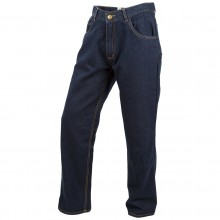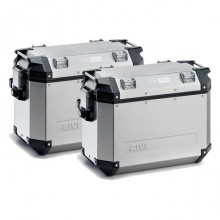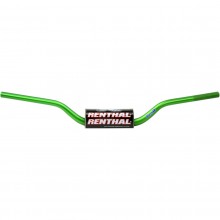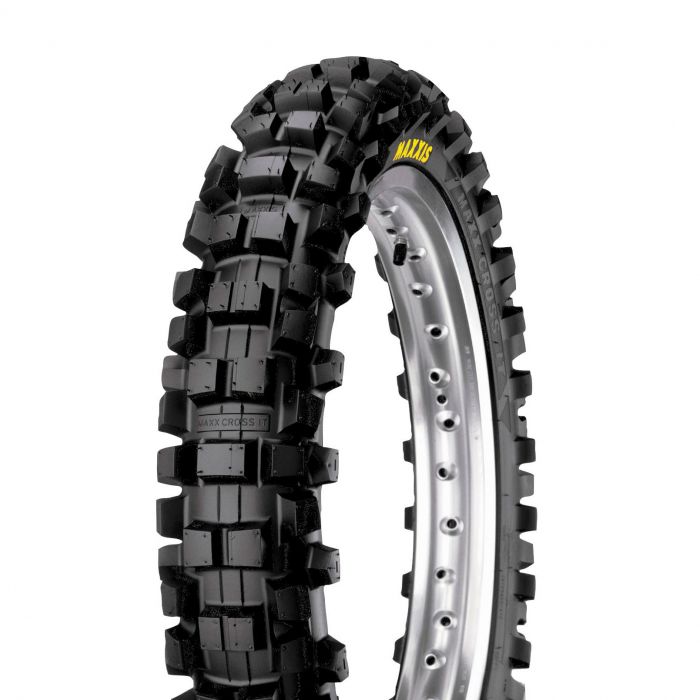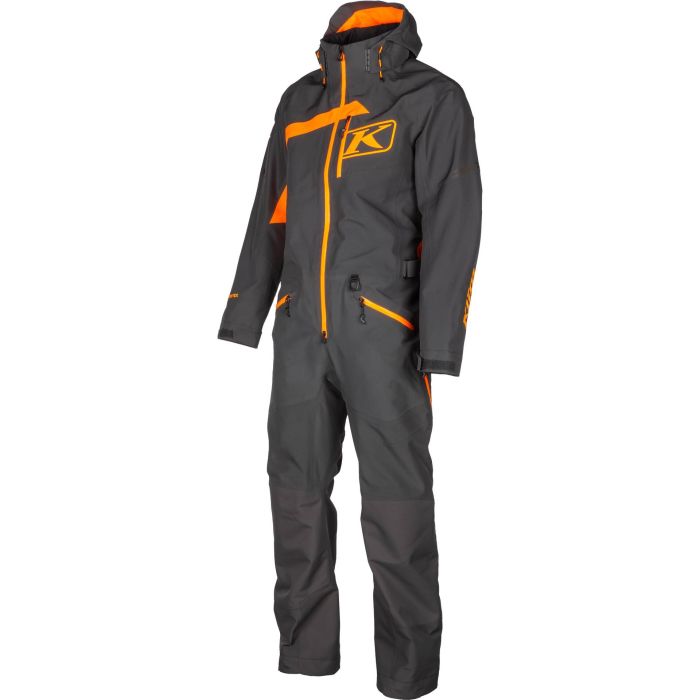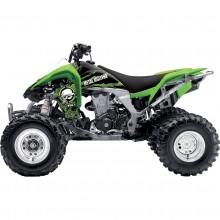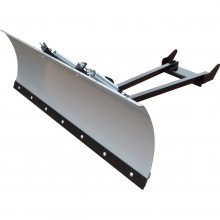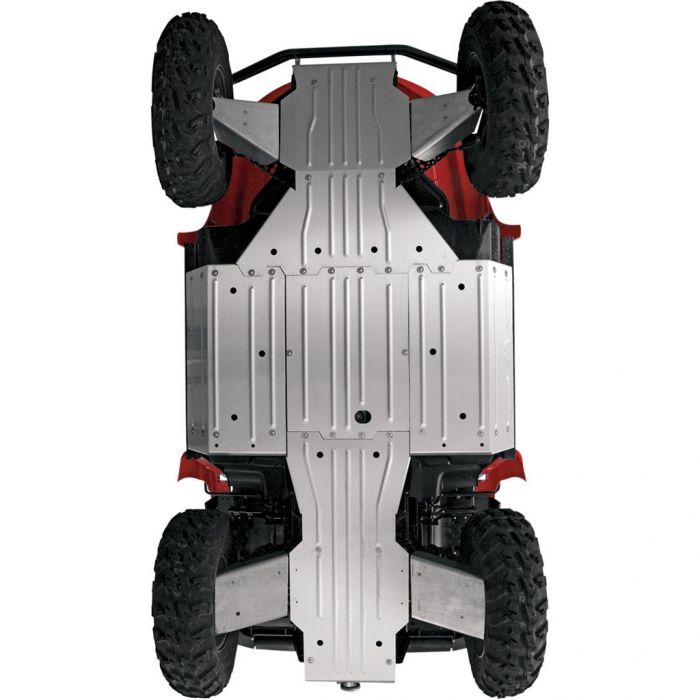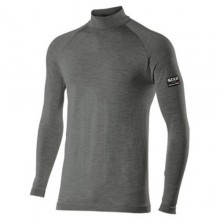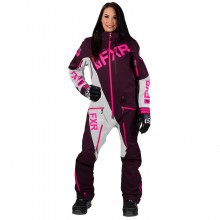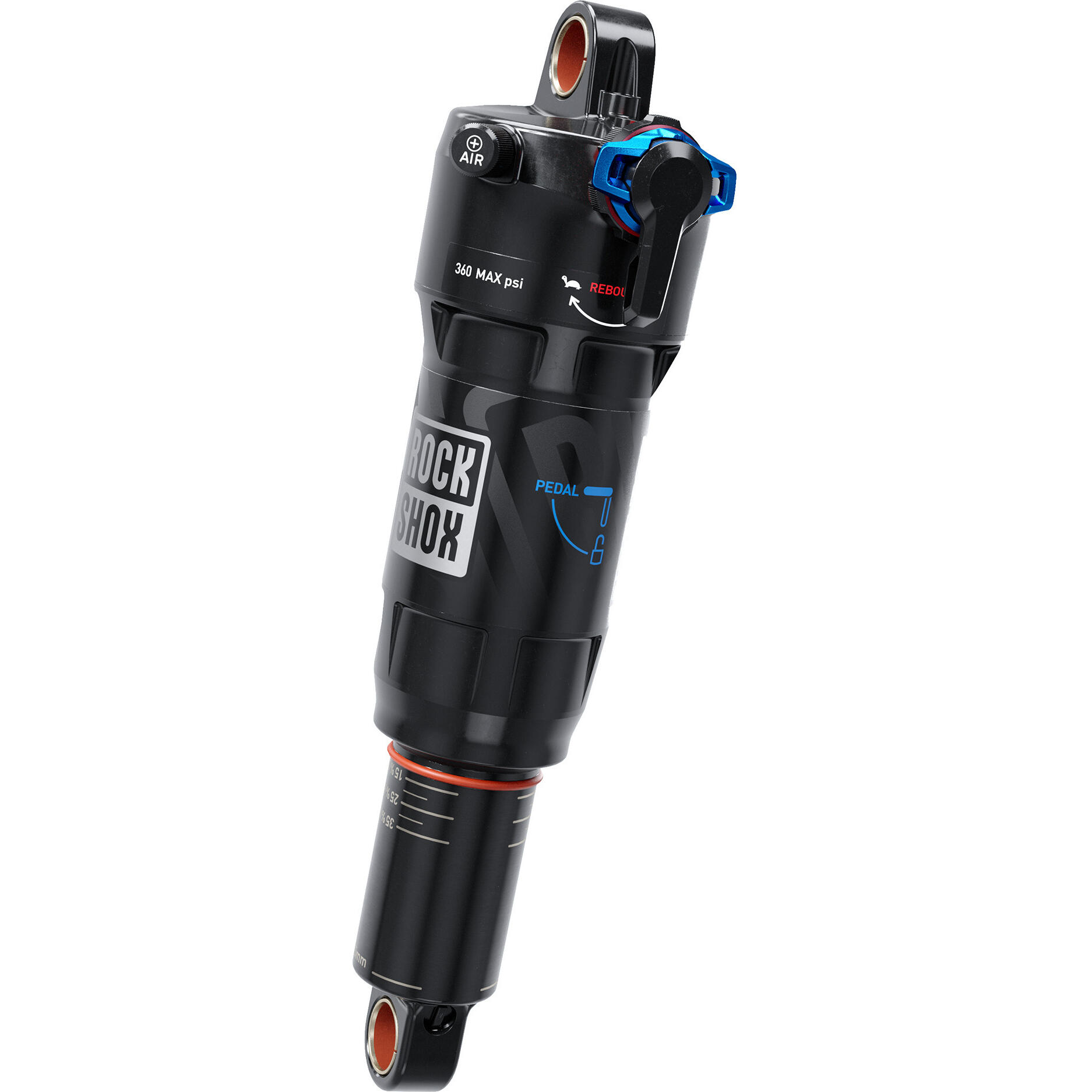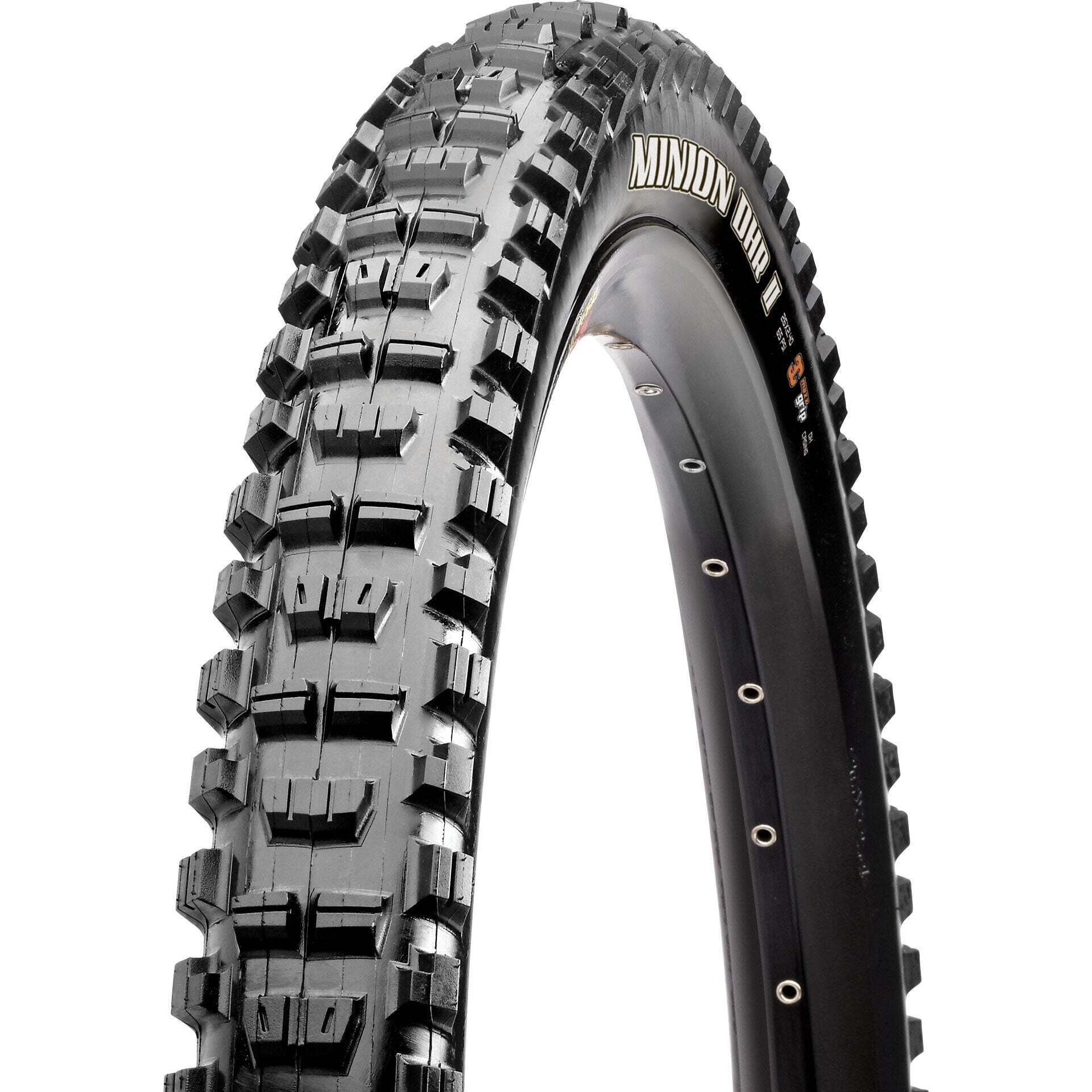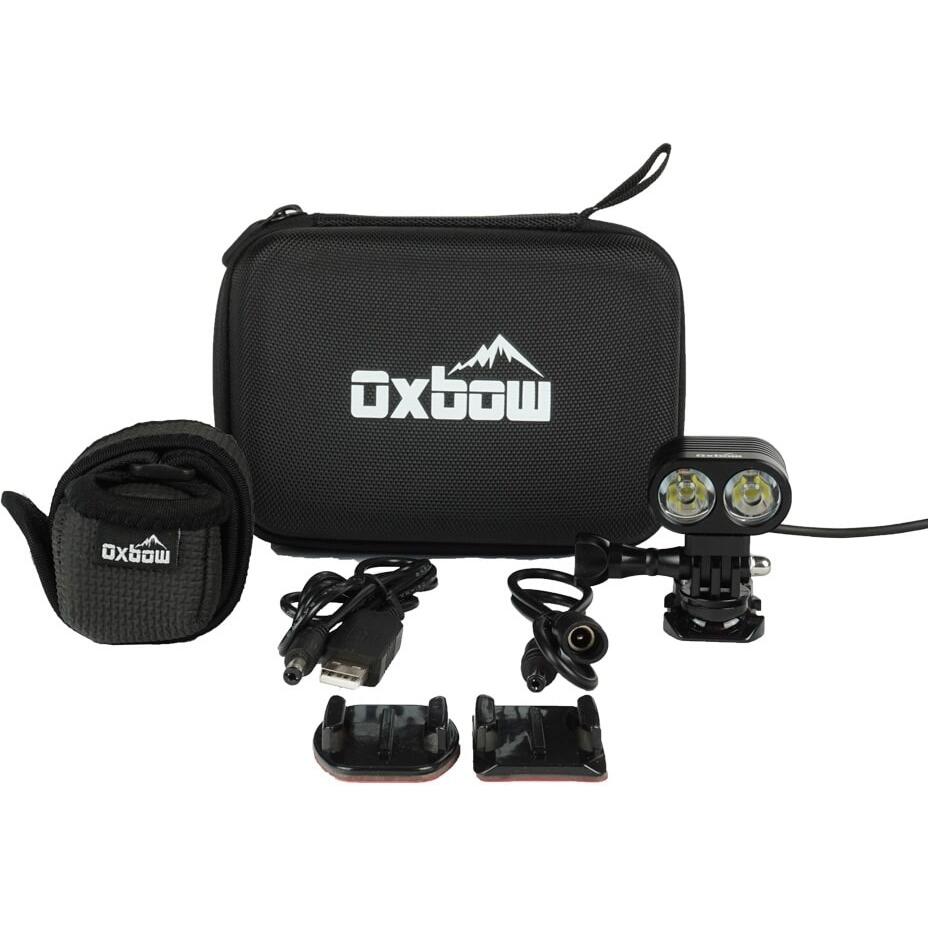There are more motorcycle accidents during the first few weeks of spring than any other time of year. Why?
I blame it on the winter (and in Canada, you can get away with that kind of thing). Literally or otherwise, you and your motorcycle are a bit rusty. On top of this, the melting snow leaves an arsenal of environmental hazards in its place.
We've put together the mother-list of common problems: Mechanical issues first, environmental issues second. There are also appendices at the end, with further information on the problems that (heaven forbid) become relevant to you.
And remember, this guide assumes that you've already dragged your motorcycle out of storage and got it running. For anything before this, see our guide for de-winterizing a motorcycle .
Mechanical Motorcycle Issues After Winter
The motorcycle is hard to turn
If your bike only wants to go straight, it probably has low tire pressure. The motorcycle will also be sluggish with a bias towards deceleration. And if things are really limp down there, it will feel a little wiggly or “drunk” to ride.
Another variation is that the motorcycle is hard to steer . That is, handlebar movement is sticky or non-uniform. If this applies to you, see Appendix A for more information on your steering head bearings.
The brakes are squishy

If the lever depresses a lot – without much stopping power – your brake fluid is probably low or crappy. It's a common issue to have after the winter months. If there was plenty of fluid last autumn, you might want to ask yourself, “where did it go?”
Check for leaks accordingly, Sherlock.
The bike is squealing like a banshee
Things tend to corrode and dry out over the winter, so don’t freak out if the bike is a bit noisy. Obviously, you need to figure out where the squeakiness is coming from. See Appendix B for a few clues.
The engine lacks power
 After the stasis of winter hibernation, your motorcycle should feel like a rocket ship. So there’s reason to be concerned if you find the power to be a tad … lame.
After the stasis of winter hibernation, your motorcycle should feel like a rocket ship. So there’s reason to be concerned if you find the power to be a tad … lame.
Old fuel is the most common – and the simplest – culprit. See Appendix C for more information on this. If the problem persists on a new tank, keep reading to see if the next few symptoms also apply.
The bike is rough at idle
Oh boy. This one could be plenty of things.
Your initial step: make a sacrifice to the motorcycle gods, and pray that the problem is something simple.
We recommend rooting out the offender in the following order: spark plugs and wires ( Appendix D ), fuel and air systems and filters ( Appendix E ), carburetors and fuel injectors ( Appendix F ) and compression ( Appendix G ).
If you used the winter months to fit a new badass muffler to your bike – nice job! Go to Appendix F right away, because the air-fuel mixture is almost certainly your problem.
The engine is overheating
 The first ride of the season is normally some half-witted attempt to exploit slightly thawed roads and a momentary break in the weather. So if your motorcycle overheats
now
, something has definitely gone wrong over the winter.
The first ride of the season is normally some half-witted attempt to exploit slightly thawed roads and a momentary break in the weather. So if your motorcycle overheats
now
, something has definitely gone wrong over the winter.
While limping home and worrying about your crotch catching fire, you might be muttering things like “radiator,” “coolant” and “oil.” See Appendix H for details, because you’re not far off.
Other drivers keep trying to kill you
This sounds like their fault and it probably is. But maybe not completely.
If other motorists seem more sadistic than usual, perhaps your indicator lights aren't working. It's fairly common for bulbs to go dead over the winter. Of course, your pre-ride checklist should have caught this ahead of time. But sometimes we forget the little things.
The same goes for anyone having trouble seeing at night. Headlights will normally fade before burning out. So if nighttime visibility seems less than it used to be, get a new headlight before the blackout.
Environmental Issues for Spring Motorcycle Riding
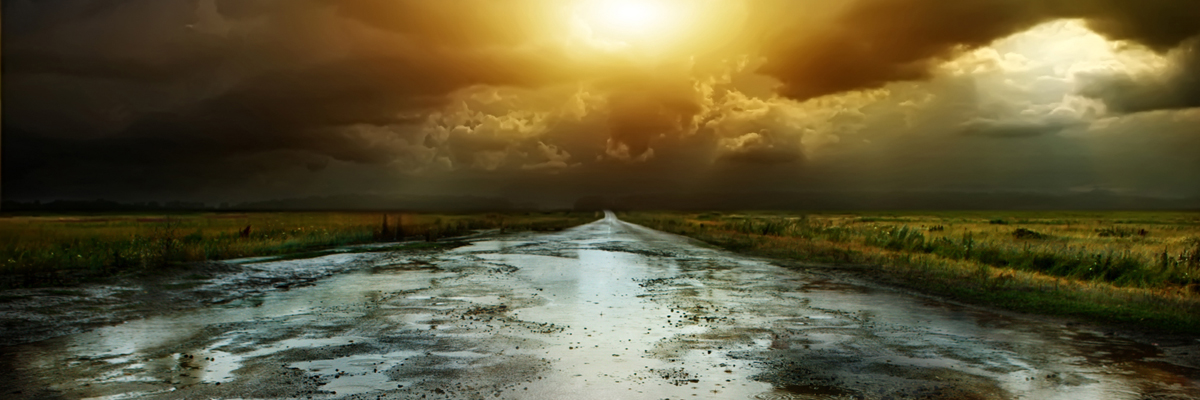
Poor traction
Sand, gravel and salt increase traction on snowy roads. But in the spring, these build-ups are more harmful than helpful.
Add wet and cold surfaces to the mix, and you have plenty of reasons to take it easy.
Potholes and frost heaves
Winter does two things to our roads. Neither of which are very enjoyable.
Potholes are sharp-edged, deep depressions that will bend a rim, pop a tire, or “off” a rider pretty darn fast. Frost heaves are the opposite – impromptu speed bumps that turn respectable roads into whoopy MX courses. The combination is something that looks a lot like the battlefield of Passchendaele.
So be careful.
Animals on the road
 Critters like to get fresh with each other in the spring. That means babies. Which means plenty of “natural selection” on our roadways.
Critters like to get fresh with each other in the spring. That means babies. Which means plenty of “natural selection” on our roadways.
Leave it to car drivers to separate the road kill from the rest. Enacting Darwinism on a motorcycle can be risky for both parties.
Spring riding frostbite
Many riders are a little too eager for their first ride. And with a quick change in the weather, it ends in frostbite more often than you'd think.
Mother Nature can be a cruel mistress. She normally targets the fingers, although any exposed skin is at risk. So dress warmer than you think is necessary, and don’t “tough it out” if you get cold 30 minutes from home. Instead you should pull over, stick your hands in your armpits, and wait for the tingling to stop. There's a not-so-Bear-Grylls method as well: find a Timmies and wrap your hands around a Double Double.
Other drivers won't see you
 In some parts of Canada, it’s been 6 months since anyone has seen a motorcyclist. So don’t be surprised if motorists have forgotten you exist.
In some parts of Canada, it’s been 6 months since anyone has seen a motorcyclist. So don’t be surprised if motorists have forgotten you exist.
Of course, defensive driving is the motorcyclist’s eternal modus operandi . But be especially careful in the springtime. Never, never, never assume that other drivers can see you.
Sunset sneaks up on you
If you set out with a dark visor, make sure you’re not surprised by the night. The same goes for those with learner’s motorcycle permits, which often prohibit riding after sunset.
Everyone knows that the days get progressively longer in the spring. But remember: periods of twilight get progressively shorter.
Snowy patches on the road
 Riding bare roads lined with snowbanks is totally boss. And common in springtime Canada.
Riding bare roads lined with snowbanks is totally boss. And common in springtime Canada.
But use extra caution, because there's always some jerk who shovels his snow onto the roadway. Shady areas are equally dangerous for patches of lingering frost.
The Greatest Danger of All
Yourself.
It’s the message that no one wants to hear. And I know – that bike feels like home. But no matter how comfortable you are in the saddle, you will be rusty .
So take it easy out there. Share these tips with your riding buddies and keep each other sharp. Because having potential issues in mind is the best way to avoid experiencing them firsthand.
Appendices
APPENDIX A – The motorcycle is hard to turn
After winter, under-inflated tires are almost a certainty. You can thank slow leaks or cold temperatures for that. Probably both. Usually tires just need to be pumped up, but if they show signs of wear or damage you should replace them.
If the motorcycle is hard to steer , the steering head bearings probably need servicing. While bearings can "dry out" over the winter, it's more likely that you simply didn't notice the issue last fall. Motorcyclists get so accustomed to their steering's deterioration that it often takes an extended break from riding to notice the issue. Bad bearings normally manifest themselves as "sticky" handlebar movement. Alternately, you might feel a "notch" or preference for the bars to point straight ahead.
Servicing your bearings involves removing, cleaning, greasing and repacking them. If the bearings have been un-lubricated for too long, they might be irreparably damaged. No worries though - bearings are cheap to replace.
You might also notice that the steering head is loose . Check for transverse or angular play in the front fork. This can be caused by bad bearings or – more simply – a loose connection. In alarming circumstances, loose steering heads will cause speed wobble.
APPENDIX B – The bike is squealing like a banshee
Chains often need lube after winter storage, so listen to see if the squeak is coming from there. The same goes for any noisy cables and levers. In some cases, the speedometer will scream at you for going fast. If this happens, it’s not that your motorcycle has become a pansy over the winter. Rather, your speedometer cable is probably dried out.
If the suspension is squeaky, it could be a number of things. Hopefully you’re just a little low on fork oil. If this isn't the problem, you’d better check that the suspension is securely attached at each end. Pay attention here: wiggly connections on the swing arm, steering head or wheel hub can cause bigger problems than a few squeaks.
It’s also common for older bikes to become noisy in general. If this is the case, just go around tightening bolts and greasing contact points.
APPENDIX C – The engine lacks power
Have you refilled the tank with fresh gasoline? Fuel will lose its volatility over time. This is especially true if you added a stabilizer before winter storage. No drastic measures are required here – just burn up the old fuel and put new stuff in.
If the problem persists on a fresh tank, read the next few sections.
APPENDIX D – The bike is rough at idle: Part 1
If the electrical flow to the spark plugs is inhibited or erratic, the engine will run rough. Start by looking at the spark plug wires. Check for cracking and kinking along the length of the wire and for discoloration at the terminals. After the winter, it’s not unusual to find corrosion problems. Some baking soda, water and a toothbrush is normally all you need to clear it up, but make sure the power source is OFF first. Otherwise, zap!
Assuming clean wires don’t solve the problem, take out each spark plug next. If the plugs look fouled , thank the motorcycle gods for your good fortune. Because replacing plugs is a cheap and easy fix.
If you suspect that the plugs aren't to blame, consider their coloration anyway. A plug with dark or wet deposits indicates an overly rich fuel mixture. Conversely, plugs with glossy or extremely white porcelain insulator tips suggest that you're running lean. A brown or light-grey firing end means your fuel mixture is good.
If your motorcycle is running lean or rich, that could be a contributing factor to the idle problem. Make a note of it for Appendix F.
APPENDIX E – The bike is rough at idle: Part 2
We have a few easy fixes left, so don’t freak out.
A rough idle could indicate that your motorcycle is starving for gasoline or air. As we all know, internal combustion requires a fairly precise mixture of both.
The carburetor or fuel injector is where the magic happens, but we’ll save that for the next step. First, let’s consider how fuel and air is getting there. The former starts in the tank, so take a flashlight and look around for dirt or rust. If you notice any, draining and cleaning the tank could help. You’ll also want some fuel system cleaner additive to flush the gunk from the narrower bits of your fuel system.
There’s another culprit in the tank you can’t see – condensation. If water builds up over the winter, it could cause a rough idle. Refilling the tank with fresh gasoline is the best way to test this theory.
Depending on the bike, gasoline might go through a fuel filter before reaching the carb or injector. If this is the case, check to make sure that the filter is clean and unobstructed. If not, replace it. This is a $10 problem that you'll be thankful to have.
For air, your method is even simpler. Make sure that the air intake is unobstructed and the air filter is clean. Once everything is Kosher – and if your bike is still rough at idle – we move onto the carburetor or fuel injector.
APPENDIX F – The bike is rough at idle: Part 3
If you remember how your spark plugs looked in Part 1, that might tell you whether your engine is running lean or rich. Keep that in mind when looking at fuel injector or carburetor problems.
Fuel injectors are virtually maintenance free. However, it is possible that the injection electronics are at fault. It’s worth downloading any error codes from the motorcycle’s computer (if applicable). Blown sensors can muck up fuel mapping pretty quick, subsequently creating a rough idle.
Note: fuel injection is almost always the issue for anyone who customized their exhaust or intake systems over the winter. That’s because you've changed how your motorcycle “breathes.” So, the fuel injection needs to be adjusted to restore a proper air-fuel mixture. You do this by buying a fuel controller , which can re-tune fuel injection via the engine control unit (ECU).
For carbureted bikes , our process is more mechanical. First off, adjust the mixture screws. Do this while the engine is running and you’ll notice how the air-fuel mixture changes your idle. However, beware of simply covering up the roughness. Making your bike idle faster will cause it to sound smoother, but that may not fix the irregularities.
If the screws don’t help, you can clean the carburetor. Watch a few how-to videos first, because it's easy to mess it up. In particular, you don't want to destroy your gaskets when taking the carb apart. One of the main things you’re checking here is the jets. Their tiny openings are easily clogged, resulting in a lean mixture. Some carb cleaner and a copper wire is normally enough to clear them out.
If you customized your motorcycle’s intake or exhaust systems over the winter, you probably need to buy a jet kit . That's because your motorcycle is "breathing" air into the carburetor at a different rate. You need to adjust the fuel jetting to restore a proper balance.
Finally, make sure to sync the carburetors if you have more than one. This may have been the original problem. But if not, you should sync them anyway now that you've fooled around in there.
Yet again, thank the gods if these measures solve the problem. Carb cleaner is less than $10, jet kits run under $100, and fuel controllers can be had for around $300. Besides, every bike will benefit from some aftermarket fuel mapping.
APPENDIX G – The bike is rough at idle: Part 4
Yikes. If none of the above procedures fixed the issue, things are starting to look hairy.
We’re moving beyond the average tinkerer’s capabilities now. You might be a motorcycle guru, but I would see a mechanic at this point. You’ll want to get the compression checked in each cylinder and – if it’s bad – the rings, pistons or cylinders themselves might be to blame. Feel free to curse the gods now, as we could be looking at a total engine rebuild.
APPENDIX H – The engine is overheating
After winter, oil problems frequently cause overheating. Low oil means high friction, so make sure you have enough in there. On the other hand, adding too much engine oil will increase pressure and – subsequently – heat. So, make sure you haven’t overfilled it either.
Crappy oil is a poor lubricant. So if you didn't change it last autumn, you might want to do so now. And if your motorcycle has an oil cooler you should inspect that for damage too.
High strain can also cause an engine to overheat. Slipping clutches, resistant drivetrains, dragging brakes and low tires will make your motorcycle work harder than it needs to.
Additionally, engines that run lean tend to run hot. Fuel mixture commonly goes awry during the winter, so check your spark plugs for glossy or excessively white insulator tips. This indicates that you have a lean mixture to correct. Appendix E and Appendix F explain potential solutions in detail.
Now, the next few suggestions depend on whether your bike is liquid- or air-cooled.
For liquid-cooled motorcycles , check first to see if you have enough coolant. If not, don’t just fill it and forget it! Figure out how the missing fluid escaped over the winter.
Also remember that coolant will turn mucky over time. If it plugs up the system, your bike is going to overheat in a real hurry. Try draining and replacing the coolant if you haven't done it in a while.
Interestingly, the radiator cap has more influence on a motorcycle’s cooling system than you might expect. If your cap isn't holding a pressure seal, find one that does.
If the motorcycle overheats while riding but not at idle, the radiator itself is probably gummed-up. Bugs and dirt on the radiator's exterior can cause this problem. But after winter, I’d wager that mineral build-up on the interior of the radiator is more likely.
On the flip side, motorcycles that overheat at idle but not while riding normally have faulty fans. The fan is supposed to pass air over the radiator while the bike is stationary, thereby cooling the coolant. If this isn't happening, you could have damaged wires or a physical blockage on the fan itself.
For air-cooled motorcycles , the procedure is simpler. Assuming you've already considered the oil and mixture problems above, check that the cooling fins are clean and unobstructed. This is crucial for the speedy radiation of heat. In case you've ever wondered why air-cooled engines look like accordions, this is why.





